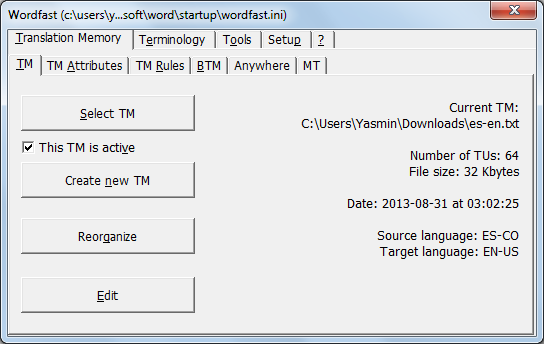Difference between revisions of "Using a WFP3 TM in WFC"
(Created page with "The TM format of Wordfast Classic, Wordfast Pro, and Wordfast Anywhere is almost the same. However, due to some differences in how each tool ha, it is recommended to ...") |
(No difference)
|
Revision as of 17:52, 16 March 2015
The TM format of Wordfast Classic, Wordfast Pro, and Wordfast Anywhere is almost the same. However, due to some differences in how each tool ha, it is recommended to take the following points into consideration:
Reorganize
Before moving the TM from Wordfast Classic to Wordfast Pro, you must "Reorganize" it. You should do the same when moving a TM from Wordfast Pro to Wordfast Classic. In both cases, this means you should click the button "Reorganize" on the TM tab of Wordfast Classic Setup dialogue.
Tags
While using a Wordfast Pro TM in Wordfast Classic, you can get better matching rates (sometimes raised from 70s to 100) by opening (a copy of) the WFP TM in Word and applying one find-replace operation on the tags before using the TM in WFC.
WFP TM format tags look like this:
&tA; &tB; &tC; &tD; ect.
They start with (&t) and end with (;). So, one can use MS Word Find-Replace dialogue to replace them using this (four-letter) formula:
Find what: &t*; Replace with: (Leave it empty!) Use wildcards (checked)
Currently, you can do the same using the Wordfast Classic filter "Remove All Tags".
Open Data Editor by clicking the second rightmost toolbar button, and then open the "Tools" tab.
In WF Classic, do not forget to (1) "Reorganize" the TM, and (2) lower the "Fuzzy Threshold" to 50.
